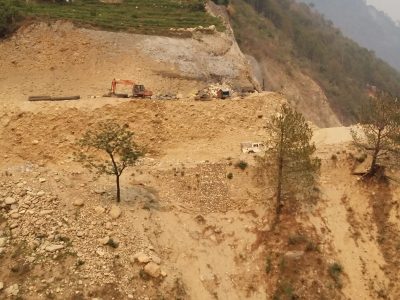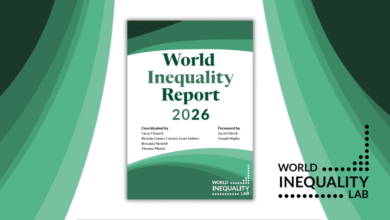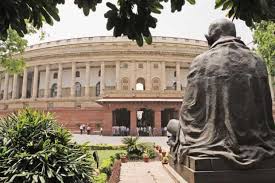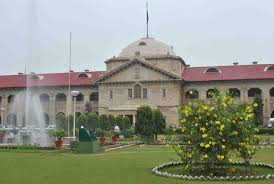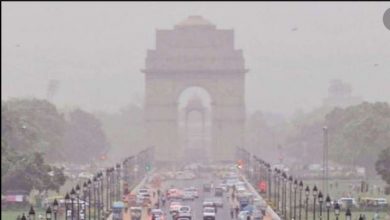Chardham Project Will Destroy the Fragile Ecology of the Himalayan Region
By Surabhi Agarwal, Lubna Sarwath and Sandeep Pandey
The ecologically sensitive citizens had barely recovered from the excruciating death of Professor G.D. Agrawal aka Swami Gyan Swaroop Sanand, who gave up his life after a 112 days of fasting on 11 October, 2018, in Rishikesh demanding an end to devastating activities going on in Himalayas in the form of construction of a series of dams on various streams which join to become Ganga, mining in its bed and deforestation in its valley, that they are now witness to another tragedy unfolding.
The Himalayas are of tremendous ecological, cultural and religious significance for the people of India. Yet, for the past several decades the region’s abundant natural resources are being exploited and its ecosystems destroyed in the name of development. Now, the ambitious 900-kilometre Chardham Highways project, work on which began in 2018, seems set to propel the Himalayas towards unprecedented environmental disaster.
The goal of the project is to widen the roads leading up to the four Hindu pilgrimage sites of Gangotri, Yamunotri, Kedarnath and Badrinath. According to the government, this is intended to improve “connectivity to the Chardham pilgrimage centres in the Himalayas, making the journey to these centres safer, faster and more convenient.” It is ironic then, that the project was pushed through by the authorities with complete disregard for the environmental protection laws of the country.
Such a large-scale project should have required a comprehensive and rigorous environmental impact assessment (EIA), including public consultations and hearings, before being given the green light, as it is mandatory for road projects which span more than a 100 km. However, the government surreptitiously side-stepped this requirement by dividing the 900 kilometre stretch of road into 53 segments, each of less than a 100 km, and labelling the work to be done on each segment as a separate project.
Not going through the assessment process has not only put the environment and people of the region at great risk, but, by extension, even threatens the safety of the travellers for whose convenience these roads are being constructed.
The whole Himalayan region is geologically unstable and disaster-prone. The Himalayas are young mountains which are still in the process of formation. They grow in height by about 6 cm every year. They lie in seismic zones 4 and 5 because of which they experience frequent earth tremors and other seismic phenomena. They also experience exceptionally heavy rainfall. Large-scale deforestation and indiscriminate construction activity, mining and quarrying further contribute to the geological instability of the region.
The Chardham sites are located in areas which are particularly susceptible to landslides and land subsidence. They are amongst the sites which experience the most topsoil-loss in the country. According to a report prepared by the geological survey of India in the wake of the Kedarnath disaster of 2103, road construction in the area has disturbed the natural slope of the mountains over the years which has led to their destabilisation and to the activation of landslides. Yet, this already precarious nature of the environment has been completely disregarded in the formulation of this project.
The minimum width of the highway roads has been set at 10m, which many environmentalists have criticised as being far too wide considering the extent of slope cutting and soil displacement it would require. It has been reported that due to the mountains being cut at the dangerous angle of 90 degrees in many places, several landslides have already occurred at different points along the route. There have been several reports of fatalities among the construction workers as well as travellers and residents of the area. Damage to property and agricultural land has also been reported. The muck generated from the cutting of the slopes is being dumped directly into the rivers, causing extensive damage to their water quality and aquatic life.
Environmental groups such as Ganga Aavaahan and the South Asian Network on Dams, Rivers and People have voiced concern over the project. The late Professor G.D. Agrawal had also strongly criticised the project before his unfortunate death.
As the extent of the destruction due to the project started to become apparent, some concerned citizens filed a petition in court. Eventually, the matter reached the Supreme Court, which formulated a High Powered Committee to look into the matter, naming the eminent environmentalist Ravi Chopra as its chairman. The court directed the committee to ensure that the Chardham project conforms with the requirements of safe and sustainable construction in the steep valley terrain of the region.
Ravi Chopra and a few of his committee members have, after a systematic and extensive investigation of the situation, suggested an intermediate road width design of 5.5 metres, as opposed to the 10-metre double-lane paved shoulder design. Through a circular issued in 2018 Ministry of Road Transport and Highways itself originally recommended 5.5-metre width for roads being constructed in the Himalayas.
However, a group comprising 22 of the 26 members of the committee, who are mainly government officials and employees, have opposed Dr Chopra’s recommendations. They have submitted a separate final report to the Union environment ministry which supports the double-lane paved shoulder design. Ravi Chopra and the other three members of the minority group, who are all independent experts and scientists, have stood firmly by their recommendations, which they believe are the only viable option for protecting the Himalayas. They have requested that all construction activity on the project be halted until the final decision on the road width, which is now left to the Supreme Court, is made.
One of the reasons being proferred in support of wider road is facilitation of faster movement of troops given the imminent Chinese threat at the border. However, landslides, as they become frequent accompanying the ecological disturbance created due to the project, which cause traffic jams for hours and days at a stretch may prove to be a spoiler. The manner in which members of the High Powered Committee who have their own vested interests are misusing their power to further an agenda which is completely contrary to the public interest is condemnable and undermines the authority of the Supreme Court. The Court must take cognizance of the compromised nature of the parallel report submitted by them and order the adoption of the chairman’s recommendations so that the damage being done to the Himalayan ecology by the Chardham project can be mitigated.
Looking at the broader context, with the ongoing COVID-19 pandemic as well as the climate change crisis – both of which will likely have a profound impact on tourism in the coming years – the prioritisation of the interests of tourists and pilgrims over local environments and communities appears irresponsible and unwise. Development in the Himalayas is necessary to improve the living standards and mobility of its people, but for this, the government should take a collaborative approach which also takes into consideration the indigenous knowledge and methodologies and technologies of the people of the region. For example, the development and up-gradation of existing modes of transport and conveyance through local innovation could be considered to improve access to various remote parts of the Himalayas. This could help invigorate local economies by encouraging and supporting localised entrepreneurial activity while also facilitating the conservation of the environment.

Writers belong to Socialist Party (India). They would like to thank Mallika Bhanot for educating them on this issue.

